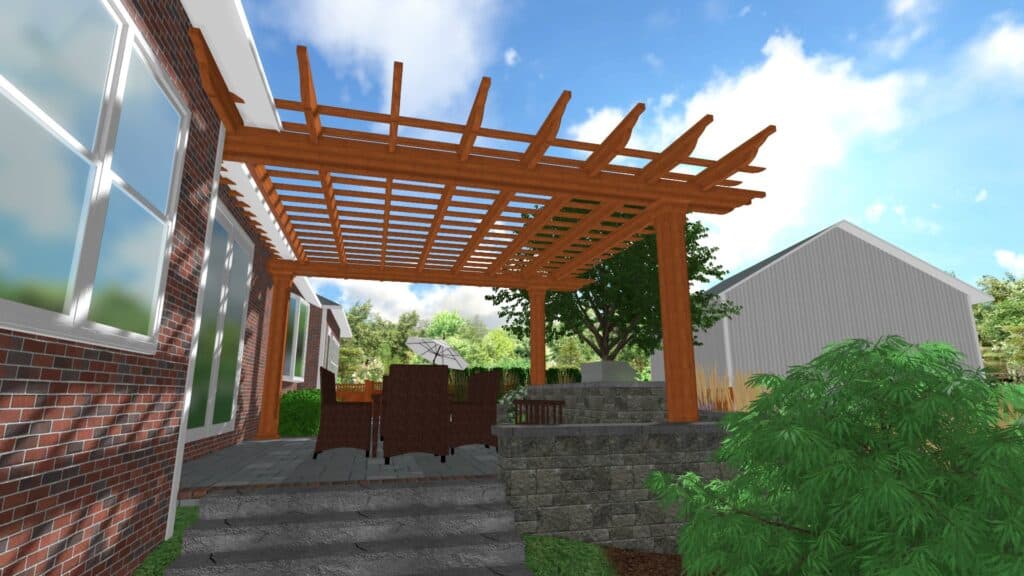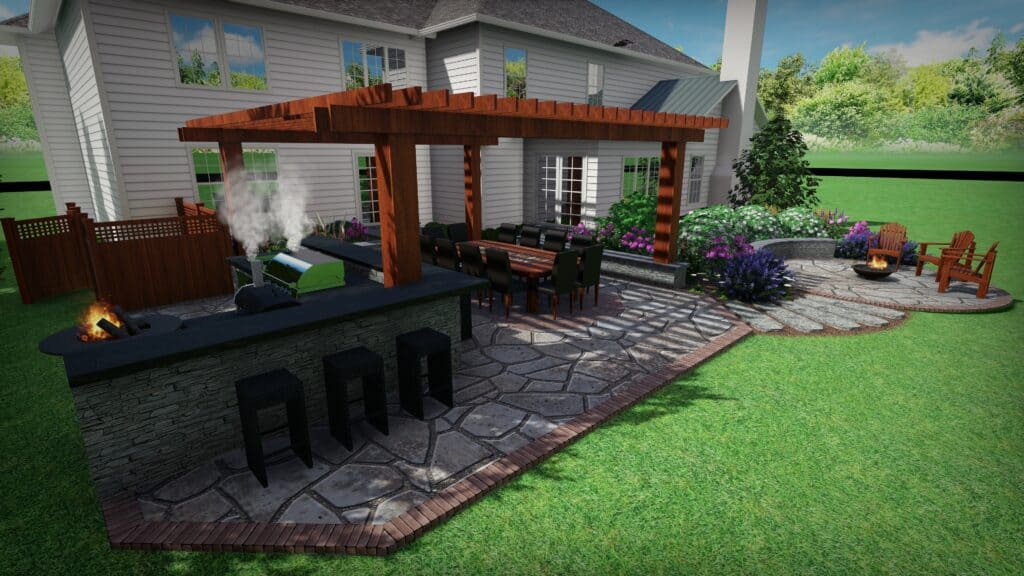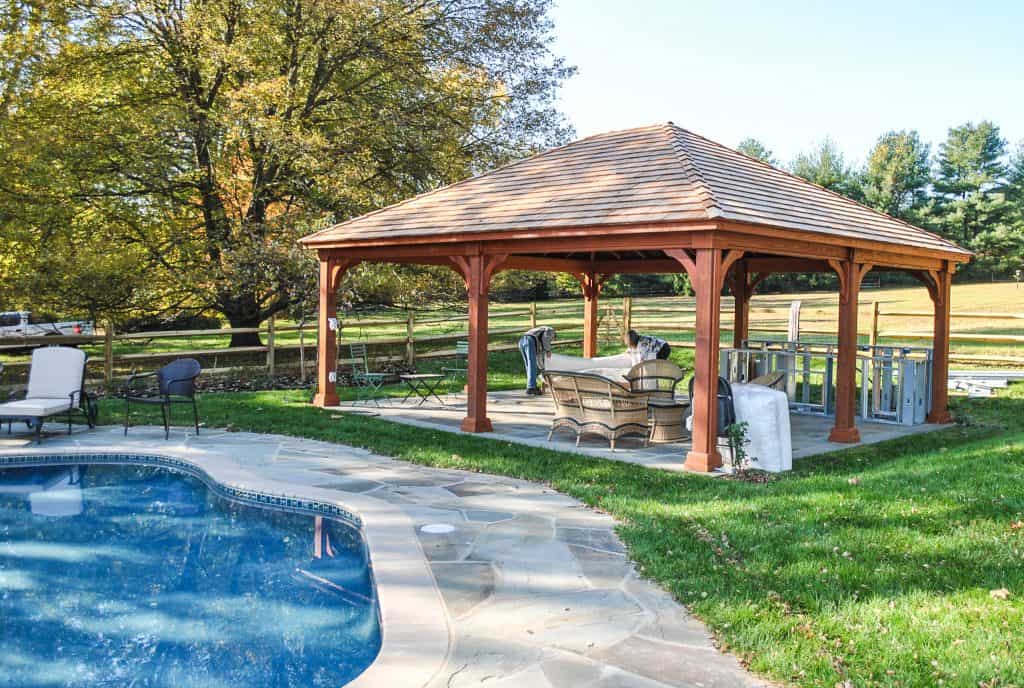Thinking about adding a covered patio to your home? Hiring a contractor is often the best way to ensure a successful and stress-free construction process. But what’s the average cost of a custom covered patio?
In this blog post, we will provide you with factors that affect the cost of hiring a contractor to build your ultimate covered patio. From labor and materials to permits and inspections, we will cover all the expenses involved in this home improvement project. So, if you’re ready to transform your outdoor space, keep reading to find out what to expect in terms of budget and investment.

1. The importance of hiring a professional contractor
When it comes to building your dream covered patio, hiring a professional contractor is of utmost importance. While some homeowners may attempt a DIY approach to save money, it is crucial to understand the value that a skilled and experienced contractor brings to the table.
By hiring a professional contractor, you are ensuring that the project is completed efficiently and up to code. Contractors have the necessary expertise to navigate through the complex construction process, taking care of permits, inspections, and any unforeseen challenges that may arise.
Moreover, professional contractors have access to a network of trusted suppliers and subcontractors, ensuring that the materials used in your covered patio are of high quality and that all trades involved are skilled in their respective areas.
2. Understanding the various components of building a covered patio
By having a clear understanding of the different elements that make up a covered patio, you’ll be better equipped to communicate with your contractor and make informed decisions regarding budget.
One essential component is the foundation. This is the base on which your patio will be built, and it needs to be strong and durable to ensure the stability and longevity of the structure. The foundation may consist of concrete footings or piers, depending on the size and design of your patio.
The next component to consider is the framing. This includes the support structure, beams, and posts that will hold up your patio’s roof. The framing needs to be designed and built according to local building codes and regulations to ensure safety and compliance.
Another crucial aspect of building a covered patio is the roofing material. This will not only provide protection from the elements but also contribute to the aesthetics of your patio. Common roofing materials include asphalt shingles, metal roofing, or even thatched roofs for a more tropical feel.
Next, you’ll need to decide on the type of walls you want for your covered patio. Depending on your preferences and the climate of your area, you may opt for fully enclosed walls, partial walls, or open screens. Each option has its advantages and considerations in terms of cost, privacy, and functionality.
Finally, don’t forget to consider the finishing touches for your covered patio. This may include flooring options such as concrete, pavers, or even natural stone for a more luxurious look. Additionally, think about outdoor lighting, ceiling fans, and other features that will enhance the comfort and aesthetics of your patio.

3. The average cost of a custom covered patio
When researching the overall cost of a covered patio install, remember that many sites estimate the cost of the roof structure alone and do not take into consideration the flooring, lighting, and other factors essential to your build. Another consideration is the fact that covered patios come in a variety of materials, styles and qualities.
Kelly Masonry helps clients design and build custom pergolas, sunrooms, and other covered structures. Typical projects include flooring for the patio as well. Costs vary, but the average cost of a custom covered patio with flooring average about $80,000 and rise to over $150,000 depending on the design.
Complete outdoor living spaces will cost more depending on additions such as outdoor kitchens, fireplaces, and/or retaining walls. If you’re hoping to install a luxury outdoor living space that includes a covered patio, be prepared to pay around $100,000 for a quality structure worth your investment.
4. Comparing quotes and negotiating with contractors
Now that you have a clear understanding of the factors that can impact the overall cost of hiring a contractor to build your covered patio, it’s time to delve into the next crucial step: comparing quotes and negotiating with contractors. This step is vital to ensure that you not only get the best possible price but also find a contractor who can deliver quality work within your budget.
Once you have shortlisted a few contractors, reach out to them and request detailed quotes for your project. Make sure the quotes include all the necessary details, such as labor costs, material costs, permits, and any additional fees. Take the time to carefully review and compare the quotes, paying attention to any variations in pricing or services offered.
Keep in mind that the lowest quote may not always be the best choice. Consider the contractor’s reputation, experience, and portfolio when making your decision. Look for any customer reviews or testimonials that can provide insight into their past work.
Once you have narrowed down your options, reach out to the contractors and discuss the quotes in detail. This is your opportunity to negotiate and find a mutually beneficial agreement. Be prepared to ask questions, express your budget concerns, and discuss any potential cost-saving options.

5. Allocating funds for unexpected expenses
No matter how well you plan or how experienced your contractor is, there can always be unforeseen circumstances or hidden costs that arise during the construction process.
To avoid any financial surprises, it’s wise to set aside a contingency fund. This fund should be separate from your budget and should typically be around 10-15% of the total project cost. It acts as a safety net, allowing you to cover unexpected expenses without derailing your entire budget.
Unforeseen expenses can include issues like foundation problems, structural modifications, or unexpected material costs due to shortages or price fluctuations.
It’s important to remember that unexpected expenses are a reality in any construction project. By being prepared and having a contingency fund in place, you can navigate these challenges without causing unnecessary stress or financial strain.
6. Additional costs to consider, such as permits and inspections
Obtaining the necessary permits and approvals is a crucial step in the construction process. Failure to do so can result in fines, delays, or even the need to redo certain aspects of your project. It’s always best to consult with your contractor or local authorities to determine what permits are required for your specific project.
Permit fees vary depending on your location and the scope of your build, but they are typically a small percentage of your overall project cost. Inspections, on the other hand, are usually conducted at various stages of the construction process to ensure that everything is being built correctly and meets the required standards.
By accounting for these additional costs, you not only avoid potential penalties but also ensure that your covered patio is built safely and legally. It’s better to allocate funds for permits and inspections in your budget from the start rather than being caught off guard later in the construction process.

7. Make an informed decision for your ultimate covered patio
Now that we have examined the various costs involved in hiring a contractor to build your custom covered patio and discussed tips for managing your budget effectively, you are well-equipped to make an informed decision. Building a covered patio is a major investment, and it is crucial to approach the process with careful planning and consideration.
Remember to thoroughly research potential contractors and obtain multiple quotes to ensure you are getting the best value for your money. Prioritize your needs and be willing to adjust your plans if necessary to stay within your budget. Keep track of your expenses throughout the construction process to identify any areas where you can make adjustments.
Lastly, maintain open communication with your chosen contractor and ensure that you have a detailed contract in place before work begins. This will provide clarity and protect both parties involved.
By following these steps, you can confidently proceed with building your dream covered patio, knowing that you have carefully considered the costs and managed your budget effectively.
